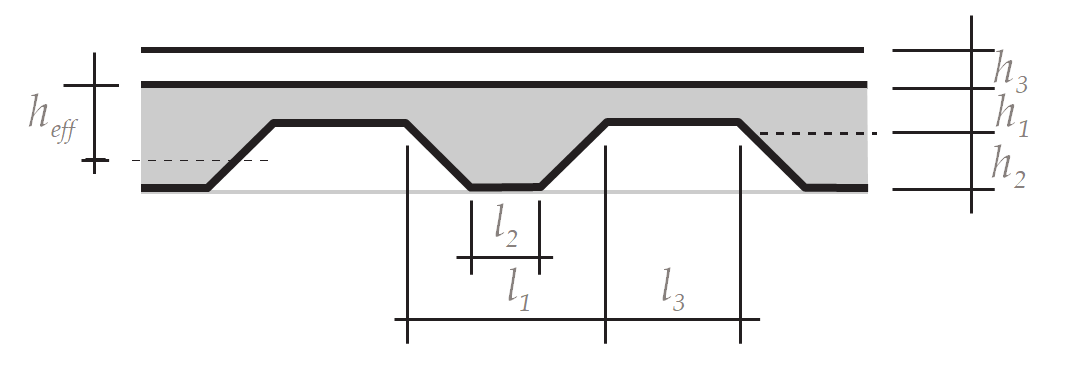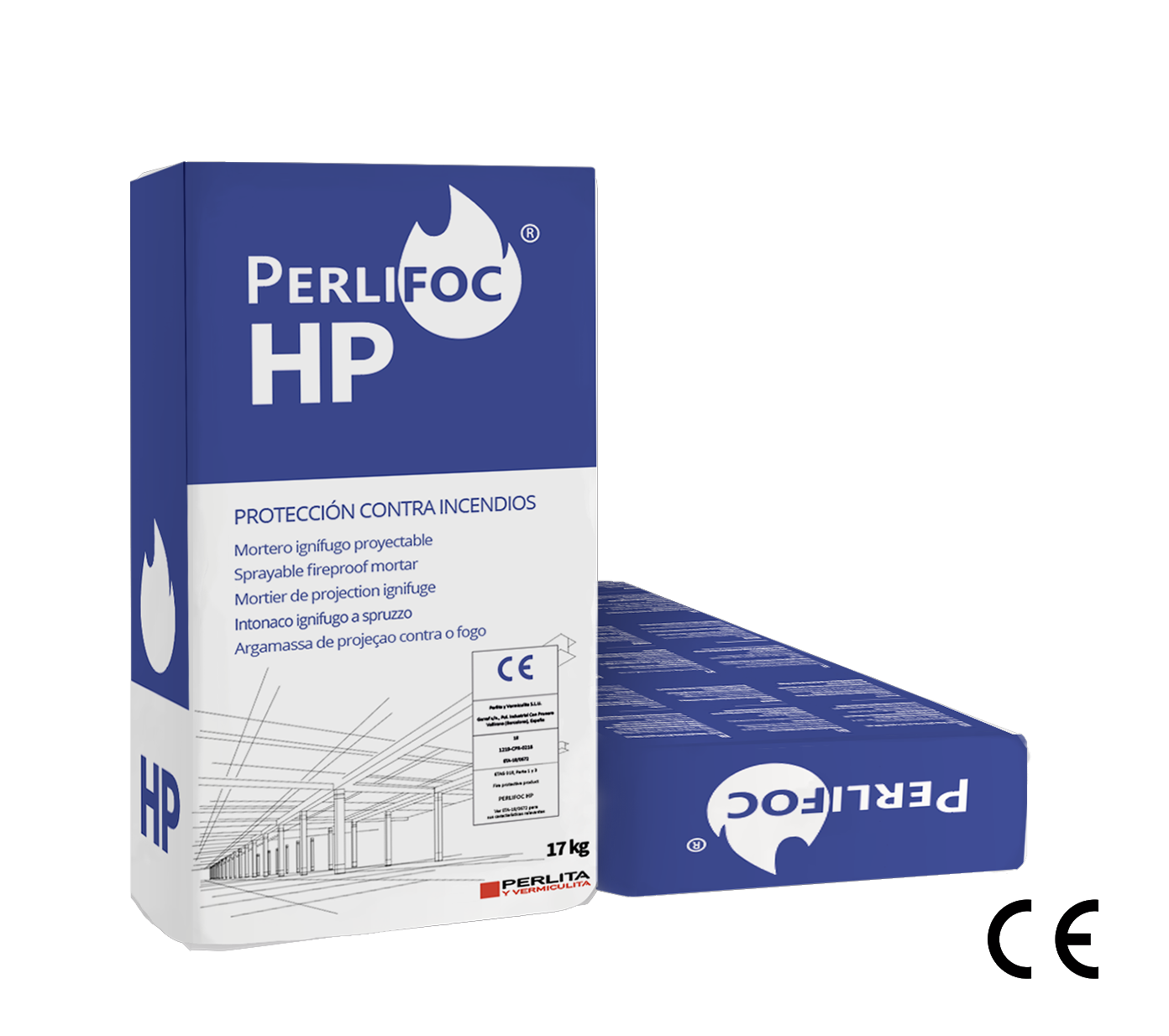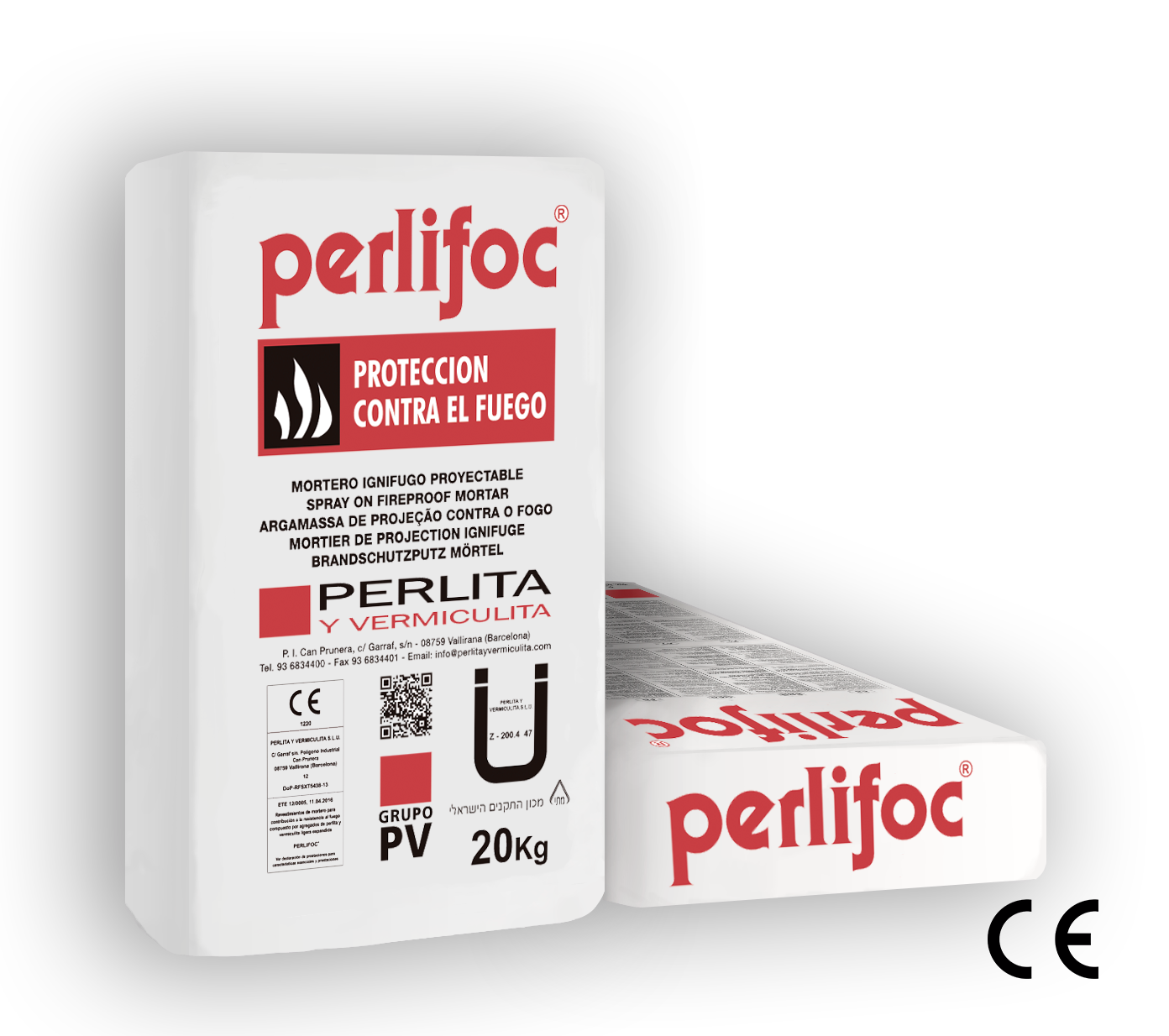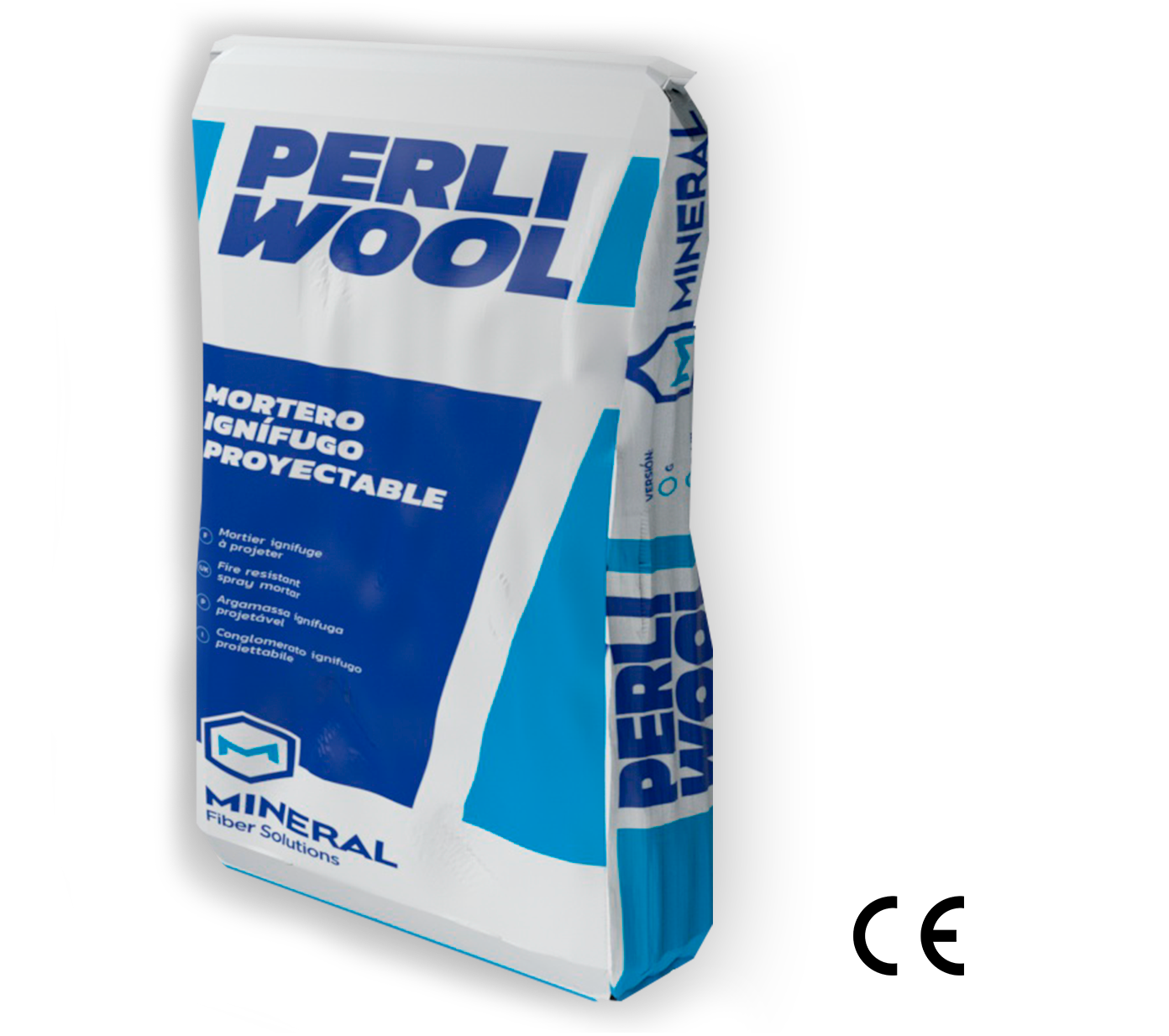The composite sheet floor is made up of a profile of trapezoidal or corrugated steel sheet and a compression layer of concrete. On this type of floor, the sheet can act as:
- Lower frame for the floor (positive framework).
- Formwork for fresh concrete.
PERFORMANCE OF THE SHEET AS A POSITIVE FRAME
The sheet serves as a positive frame and not only as permanent formwork, so the sheet is the structural element of the floor. The system is often completed with a distribution mesh embedded in the concrete, in order to prevent shrinkage cracking and temperature changes.
According to Eurocode 4 (EN 1994-1), the sheet must be protected from reaching a temperature of 350 °C so that it meets the criterion of load-bearing capacity (R)
In addition, if its partitioning is also required (EI), the criterion of total concrete thickness, as set out in annex C.2.3.3 of the Technical Building Code (CTE), must be complied with. Set out below is an explanation of how to calculate the thickness of the floor based on this table.
PERFORMANCE OF THE SHEET AS PERMANENT FORMWORK
The grooved sheet only works as lost formwork, i.e. the sheet does not collaborate with the floor. Therefore, we are dealing with a floor that behaves like a concrete slab.
To determine the fire resistance of this type of floor, the effective thickness (heff) of the slab must be calculated from the following formula:
heff= h1 + 0,5 h2 ( l1 + l2 / l1 + l3 )
Where:


h1 Thickness of concrete above the groove
h2 Height of the groove
h3 Floor or slab paving
By means of the effective thickness of the mixed floor obtained and the thickness of the paving (h3), the fire resistance can be determined based on the tables of the Technical Building Code (CTE) for concrete slabs.
If it is necessary to increase the thickness of the floor to meet the required fire resistance, a coating can be applied to the grooved sheet.
The determination of the thickness to be applied is based on the equivalent thickness of the product, this is defined as the equivalence between the thickness of the mortar and the concrete.
These values of equivalent thickness are obtained from the fire resistance tests by means of the EN 13381-5 standard.
Perlita y Vermiculita offers products to ensure protection against fire in floors of concrete-sheet composites.
Here you will find some of our recommended products to ensure greater passive fire protectio:




